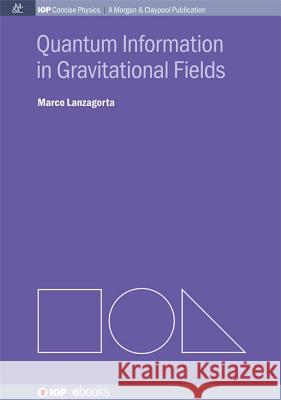Quantum Information in Gravitational Fields » książka
Quantum Information in Gravitational Fields
ISBN-13: 9781627053297 / Angielski / Miękka / 2014 / 298 str.
Quantum Information in Gravitational Fields
ISBN-13: 9781627053297 / Angielski / Miękka / 2014 / 298 str.
(netto: 250,87 VAT: 5%)
Najniższa cena z 30 dni: 262,68
ok. 16-18 dni roboczych
Dostawa w 2026 r.
Darmowa dostawa!
This book offers a concise discussion of quantum information in classical gravitational fields described by Einstein's General Theory of Relativity. Besides a basic description of the fundamental physical principles of quantum fields in curved spacetimes, we also offer some new results on steganographic quantum communications in inertial frames, qubits in Schwarzschild spacetime, the spin-curvature coupling in Schwarzschild spacetime, qubits in Kerr spacetimes, and the performance of quantum technologies operating in gravitational fields. A significant part of our discussion is restricted to qubits represented by spin- 1 2 particles (e.g. electrons). In a subsequent book we intend to cover the case of spin-1 particles (e.g. photons). Our approach makes strong emphasis on the smooth interplay between the physics and mathematics of general relativity and relativistic quantum mechanics. To this end, the book takes a unifying group-theoretic approach to these topics. Thus, our description of relativistic spin- 1 2 particles is based on the representations of the Poincare group, while gravitational effects are introduced through Lorentz transformations in local inertial frames properly defined by tetrad fields. In particular, we analyze how spin- 1 2 qubits are affected by a stationary spherically symmetric gravitational field (Schwarzschild metric) and by a stationary axisymmetric gravitational field (Kerr metric). In addition, we discuss an example that shows the coupling between a qubit's spin and spacetime curvature. Finally, we discuss gravitational effects in the context of quantum communications, entanglement, EPR experiments, quantum computation, and sensing.
One of the major scientific thrusts in recent years has been to try to harness quantum phenomena to increase dramatically the performance of a wide variety of classical information processing devices. In particular, it is generally accepted that quantum computers and communication systems promise to revolutionize our information infrastructure.











